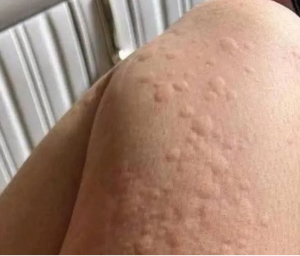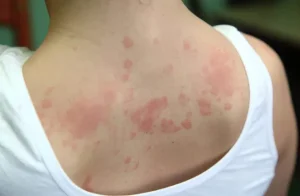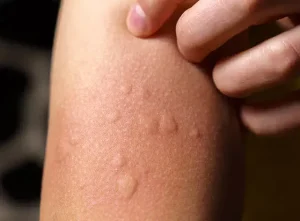Urticaria is a skin disorder in which there is the emergence of itchy red welts which are elevated in nature. The lesions are usually unequal and they may appear in clusters on other parts of the body like the face, arms, legs and the trunk. Even though in most instances the welts tend to clear off automatically within a few hours or even days, there are occasions when they tend to recur that, in turn, have a serious impact to the general well-being and living standard of the victims.
Urticaria is a widespread and usually alarming skin response that entails the emergence of welts or bumps on the skin. These lesions, some of which may be very small but others of which may be large plaques, are raised, red, or skin-colored, and are usually intensely itchy. Albeit, quite alarming, in the majority of cases, urticaria is a harmless and temporary disorder.
Urticaria happens when some body cells termed mast cells discharge some chemicals into the blood namely histamine and others into the blood. The weeping effect of this release is that the minute blood vessels on the skin surface (capillaries) rupture releasing fluid causing the typical swollen (edematous) welts.

These are the key symptoms of urticaria:
Hives: Elevated, well demarcated lesions which can be light colored in the middle and purple at the periphery.
Pruritus: Itching which may be slight or so intense.
Evanescent Character: It is one of the most peculiar features that welt disappear without a trace within less than 24 hours but the fresh welt can emerge on other body parts.
Sometimes urticaria can be combined with angioedema, or swelling of the deepest skin layers. Angioedema occurs on the eyelids, lips, hands and feet or genital area and may suffer tightness or pain. Should the angioedema be on the throat or the tongue, it may lead to difficulty in breathing and thus treated as an emergency case.
Urticaria types

The main form of classification of urticaria is based on time:
Acute Urticaria: This is the commonest and it occurs most of the time. The duration of outbreaks does not take more than a six-week period, and the cause can usually be determined.
Chronic Urticaria: This is a condition caused by the outbreaks which last more than six weeks. Chronic spontaneous (or idiopathic) urticaria is not because of a certain cause which is hard to identify in most of the cases of chronic urticaria.
Besides this, there is inducible or physical urticaria in which hives are determined by a definite external agent which may be:
Dermographism: Hives develop through scratch or rubbing of the skin.
Cold Urticaria: This is brought about by exposure to cold.
Pressure Urticaria: This type is caused due to prolonged pressure on skin (e.g. tight clothing).
Solar Urticaria: The condition is triggered by sunlight contact.
Cholinergic Urticaria: This depends on rising body temperature and so it will be experienced during exercise and/or a hot bath.
General Triggers of Urticaria

The list of potential causes of acute urticaria is extended:
Allergies: To food (e.g., shellfish, nuts, eggs, milk), to drugs (medications, antibiotics, pain reliever like aspirin or ibuprofen) insect stings, or latex.
Infections: Viral (common cold or hepatitis), and bacterial (strep throat).
Physical factors: As stated in inducible urticaria.
Emotional Stress: It is not a direct cause, but it may aggravate outbreaks in the predisposed people.
In chronic urticaria, the external cause is not identified as a rule. In a remarkable proportion of such instances, the reason is considered to be autoimmune, i.e. this is a condition whereby the body uses its immune mechanism to assault mast cells.
Diagnosis and Treatment
Urticaria is diagnosed mostly by performing a physical examination of the patient and by reviewing the medical history. The physician will attempt to discern length of the outbreaks and potential triggers.
Treatment is mostly to alleviate symptoms and, where feasible, preventive factors:
Antihistamines: They are the treatment of choice. By impeding the effect of histamine it reduces itching and the formation of hives. They are both over-the-counter and prescription antihistamines.
Corticosteroids: In the most severe or chronic cases oral corticosteroids can be prescribed in the short-term to relieve inflammation.
Avoid Triggers: In case a particular trigger can be identified, e.g. food, medication, etc., the most critical step is to avoid the trigger.
See the video here. You can turn on the auto-translation of subtitles and watch the video in English
